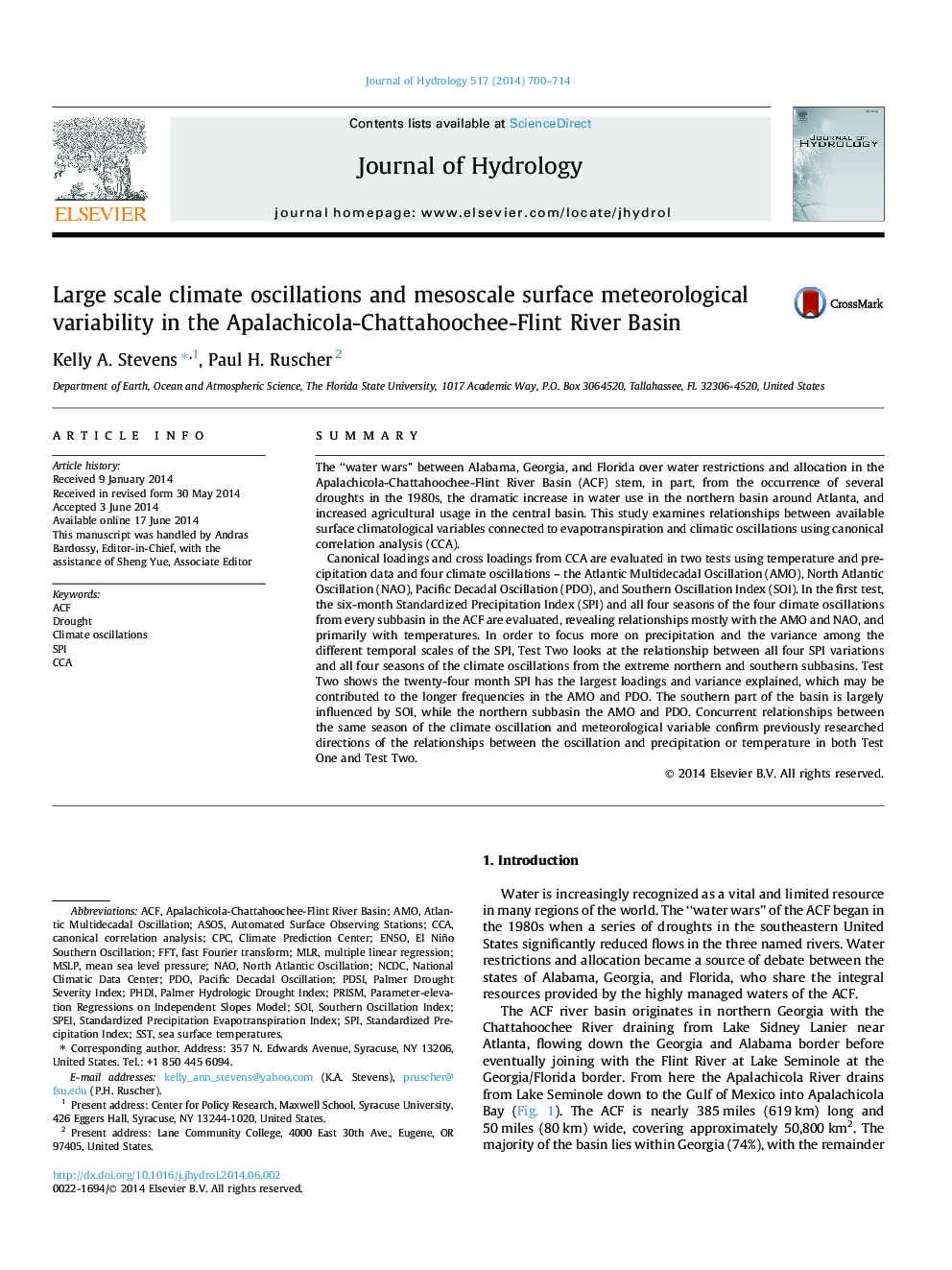| کد مقاله | کد نشریه | سال انتشار | مقاله انگلیسی | نسخه تمام متن |
|---|---|---|---|---|
| 6413017 | 1629931 | 2014 | 15 صفحه PDF | دانلود رایگان |
- We analyze climatological circumstances leading to low flows in the ACF.
- We use canonical correlation analysis to review relationships.
- This study uses temperature data and four, multi-temporal, computed SPI values.
- Climate oscillations in this study include AMO, NAO, PDO, and SOI.
- Study establishes a need for appropriate temporal SPI and subbasin study.
SummaryThe “water wars” between Alabama, Georgia, and Florida over water restrictions and allocation in the Apalachicola-Chattahoochee-Flint River Basin (ACF) stem, in part, from the occurrence of several droughts in the 1980s, the dramatic increase in water use in the northern basin around Atlanta, and increased agricultural usage in the central basin. This study examines relationships between available surface climatological variables connected to evapotranspiration and climatic oscillations using canonical correlation analysis (CCA).Canonical loadings and cross loadings from CCA are evaluated in two tests using temperature and precipitation data and four climate oscillations - the Atlantic Multidecadal Oscillation (AMO), North Atlantic Oscillation (NAO), Pacific Decadal Oscillation (PDO), and Southern Oscillation Index (SOI). In the first test, the six-month Standardized Precipitation Index (SPI) and all four seasons of the four climate oscillations from every subbasin in the ACF are evaluated, revealing relationships mostly with the AMO and NAO, and primarily with temperatures. In order to focus more on precipitation and the variance among the different temporal scales of the SPI, Test Two looks at the relationship between all four SPI variations and all four seasons of the climate oscillations from the extreme northern and southern subbasins. Test Two shows the twenty-four month SPI has the largest loadings and variance explained, which may be contributed to the longer frequencies in the AMO and PDO. The southern part of the basin is largely influenced by SOI, while the northern subbasin the AMO and PDO. Concurrent relationships between the same season of the climate oscillation and meteorological variable confirm previously researched directions of the relationships between the oscillation and precipitation or temperature in both Test One and Test Two.
Journal: Journal of Hydrology - Volume 517, 19 September 2014, Pages 700-714
